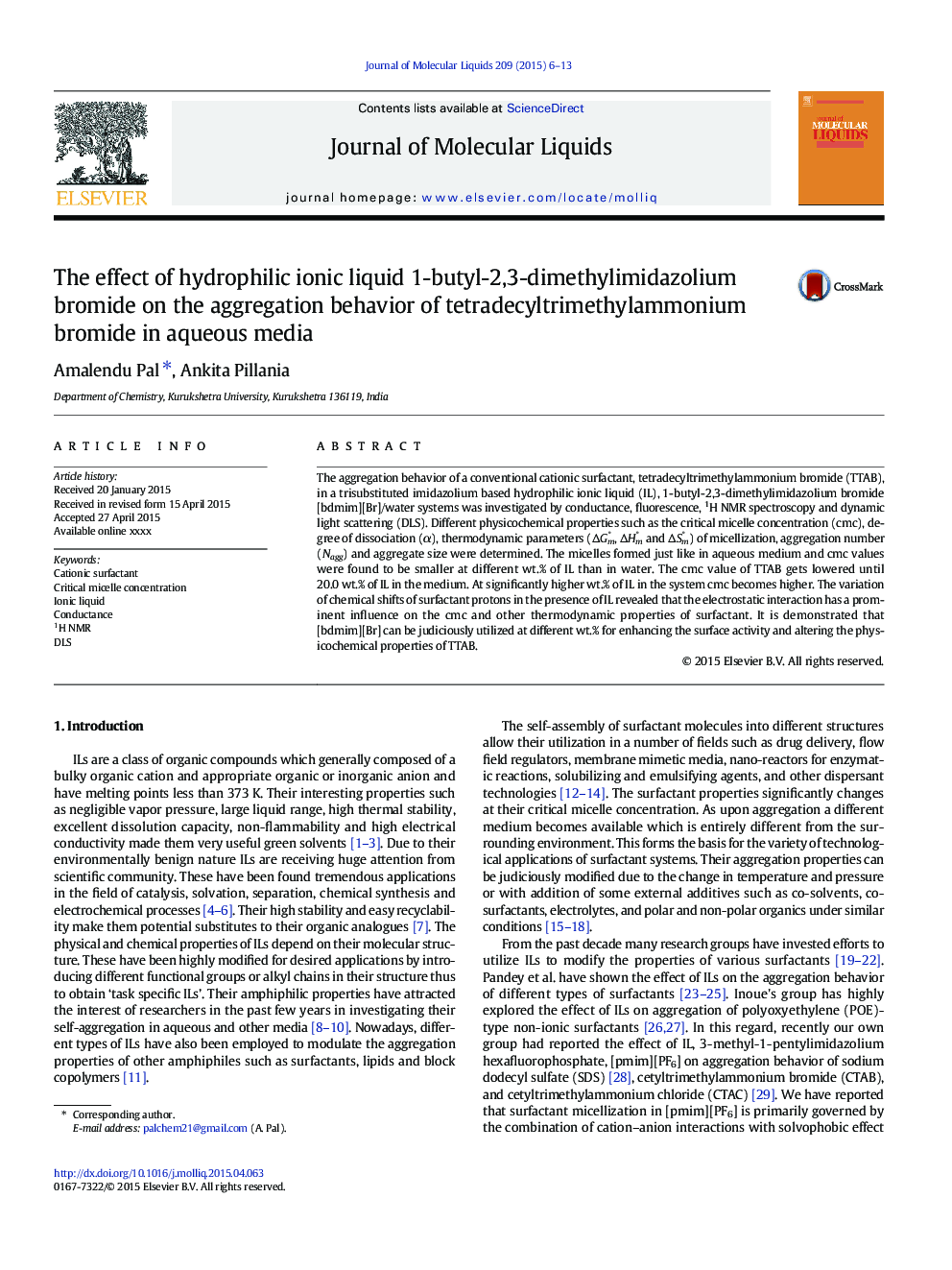| Article ID | Journal | Published Year | Pages | File Type |
|---|---|---|---|---|
| 5410843 | Journal of Molecular Liquids | 2015 | 8 Pages |
Abstract
The aggregation behavior of a conventional cationic surfactant, tetradecyltrimethylammonium bromide (TTAB), in a trisubstituted imidazolium based hydrophilic ionic liquid (IL), 1-butyl-2,3-dimethylimidazolium bromide [bdmim][Br]/water systems was investigated by conductance, fluorescence, 1H NMR spectroscopy and dynamic light scattering (DLS). Different physicochemical properties such as the critical micelle concentration (cmc), degree of dissociation (α), thermodynamic parameters (ÎGm°, ÎHm° and ÎSm°) of micellization, aggregation number (Nagg) and aggregate size were determined. The micelles formed just like in aqueous medium and cmc values were found to be smaller at different wt.% of IL than in water. The cmc value of TTAB gets lowered until 20.0 wt.% of IL in the medium. At significantly higher wt.% of IL in the system cmc becomes higher. The variation of chemical shifts of surfactant protons in the presence of IL revealed that the electrostatic interaction has a prominent influence on the cmc and other thermodynamic properties of surfactant. It is demonstrated that [bdmim][Br] can be judiciously utilized at different wt.% for enhancing the surface activity and altering the physicochemical properties of TTAB.
Related Topics
Physical Sciences and Engineering
Chemistry
Physical and Theoretical Chemistry
Authors
Amalendu Pal, Ankita Pillania,
